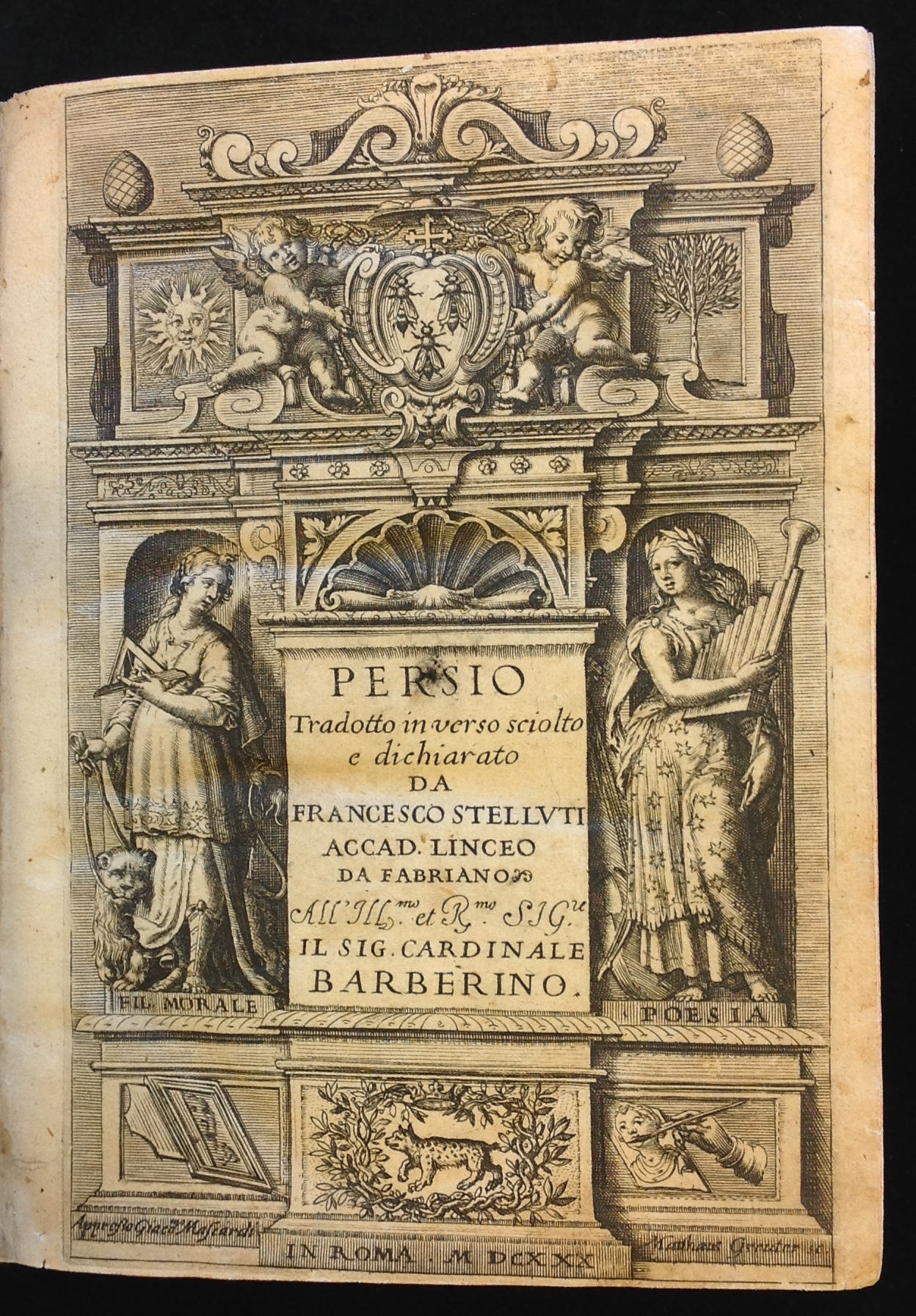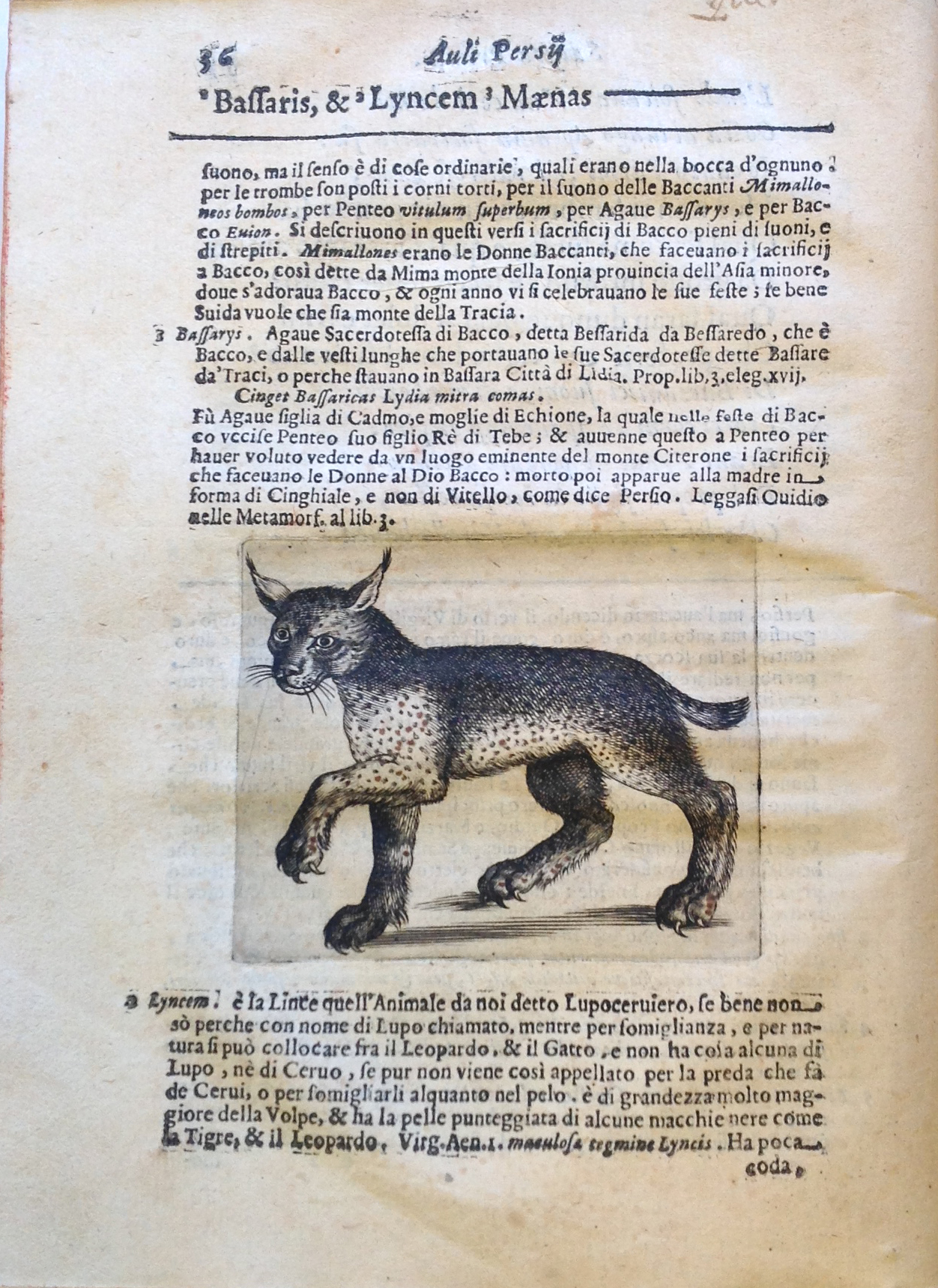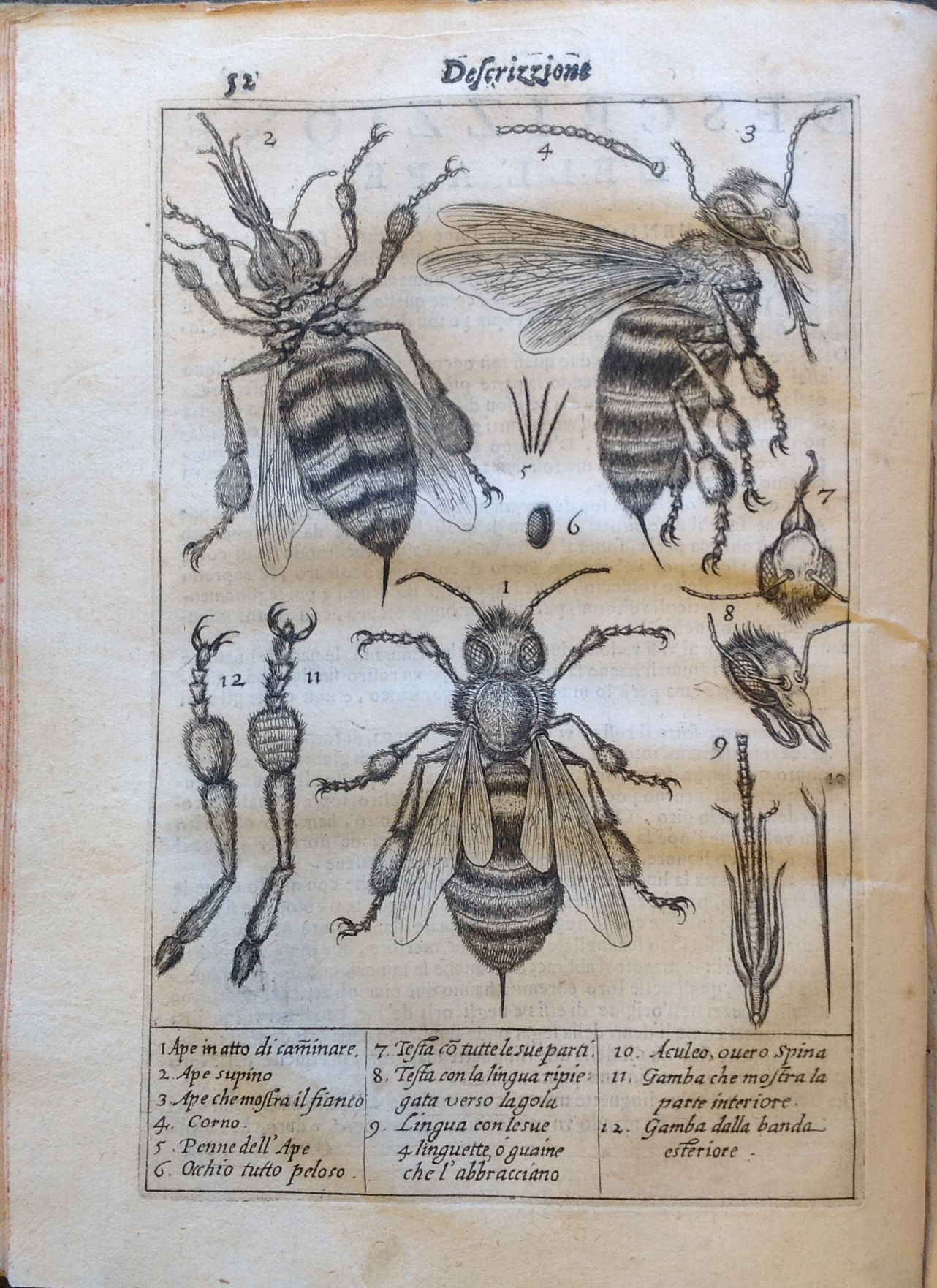The editor and translator of this book, Francesco Stelluti, was one of the founders of the Academy of the Lynx (Accademia dei Lincei, 1603-1630), an early Italian society devoted to promote scientific research. Galileo Galilei, a close friend of Stelluti, joined the Lynx in 1611, and it is very likely that he provided Stelluti with a microscope so that this edition of Persius could include detailed illustrations of a bee and its parts. Why a bee? In 1623, Cardinal Maffeo Barberini became Pope Urban VIII. The coat of arms of the Barberini family was a shield with three bees. Someone then had the brilliant idea to seek the patronage of the Pope by prominently displaying his family coat of arms on the title page of this edition.

Title page of Persio tradotto in verso sciolto e dichiarato da Francesco Stelluti. Roma: Giacomo Mascardi, 1630.

Aptly, Stelluti digresses on the word "lynx", pag. 36, Persio tradotto in verso sciolto e dichiarato da Francesco Stelluti. Roma: Giacomo Mascardi, 1630.
Moreover, after the first Satire, Stelluti unexpectedly inserted a long description of the bee along with marvelous illustrations as he actually saw this bee through the lenses of a microscope.

Pag. 52, Persio tradotto in verso sciolto e dichiarato da Francesco Stelluti. Roma: Giacomo Mascardi, 1630.
It turned out that, while Pope Urban was an enthusiastic patron of the arts, the new science was not really his thing: he would be involved in Galileo’s infamous trial in 1633.
The Special Collections Library recently acquired a copy of this edition. It will justly open an exhibit on the history of the microscope, scheduled for March 2015. Stay tuned!